What: User Research for UX Design
For: Assignment for UX Design Upskill Program at Hyper Island
My role: Interviewer and researcher
Other contributors: Three Hyper Island Classmates (Alexander Unge, Theodor Frösslund, Oksana Kanterova)
Research Objective
Understanding the fashion consumption behaviour of Gen-Z to trigger a behavioural shift towards responsible habits.
Focus on gaining insights into Gen-Z preferences, behaviours and decision-making processes in the fashion industry with a focus on responsible fashion consumption.
“I guess it’s just like: I have thought in my head for a long time that I’m going to do research and figure out which socks actually last and buy them. And it was such a long, annoying process that I eventually gave up.”
-Freddie age 24
Research Questions
- What does sustainable/responsible consumption mean to the individual?
- Does the individual’s circumstances affect their possibility to purchase sustainable clothing?
- What other obstacles exist for responsible consumption?
- What are factors that make sustainable consumption easier?
Interview Questions
- What is your definition of sustainable consumption?
- Can you give some examples of sustainable shopping?
- What does your life look like at the moment?
- Are you currently employed?
- Based on your answers to the previous question and your definition of sustainable consumption, would you be more or less likely to purchase sustainable clothing, through for example second hand stores, or would you be more or less likely to purchase more expensive and possibly less sustainable clothing?
- If you think back on your clothing consumption from today and a year back, can you recall any time that you purchased something that in your view was not a responsible buy?
- Do you remember what influenced your decision that time?
- If you think back about your cloth consumption, what would you consider to be the biggest obstacle to responsible consumption?
- What applications do you know about or use to buy second hand clothing?
- What physical shops do you visit and are there enough near your location?
- How many of your friends do the same?
- Do you watch any influencers that talk about sustainable fashion?
Research Plan
Our group conducted in-depth interviews with 6 individuals, aged 22-24:
- Freddie, age 24 from Stockholm, Sweden
- Sasha, age 24 from Izhevsk, Russia
- Alexey, age 22 from Omsk, Russia
- Tove, age 22 from Kalmar, Sweden
- Oscar, age 22 from Kalmar, Sweden
- Jenny, age 22 from Huddersfield, UK
*Names have been anonymised.
Interview Structure
5 min: Introduction, IDOARRT, Check-in
20-25 min: Research questions and conversation between interviewer and interviewee.
10 min: Purchase timeline activity on Miro-board.
5 min: Wrap-up and checkout.
Our interviews were conducted via Zoom and we used an AI-tool to record and transcribe our interviews.
*Names have been anonymised.
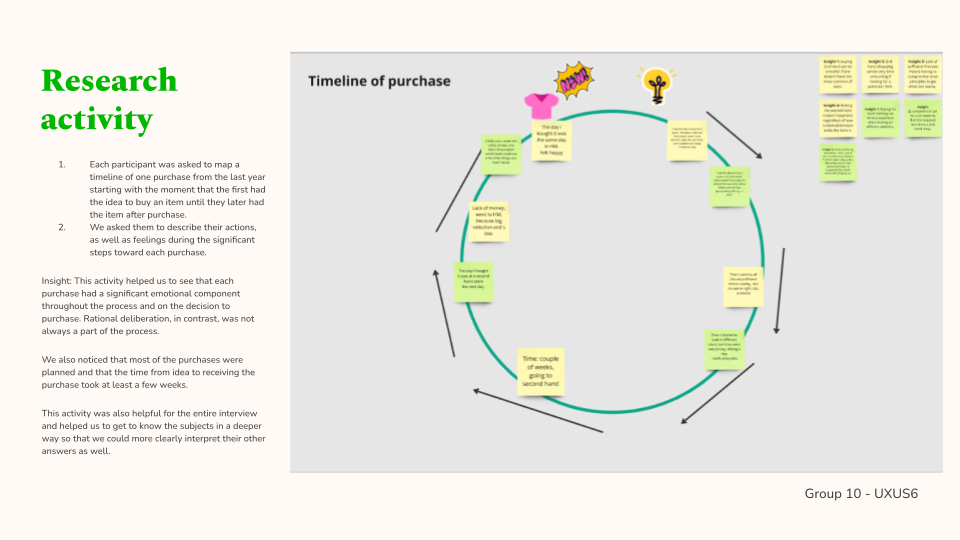
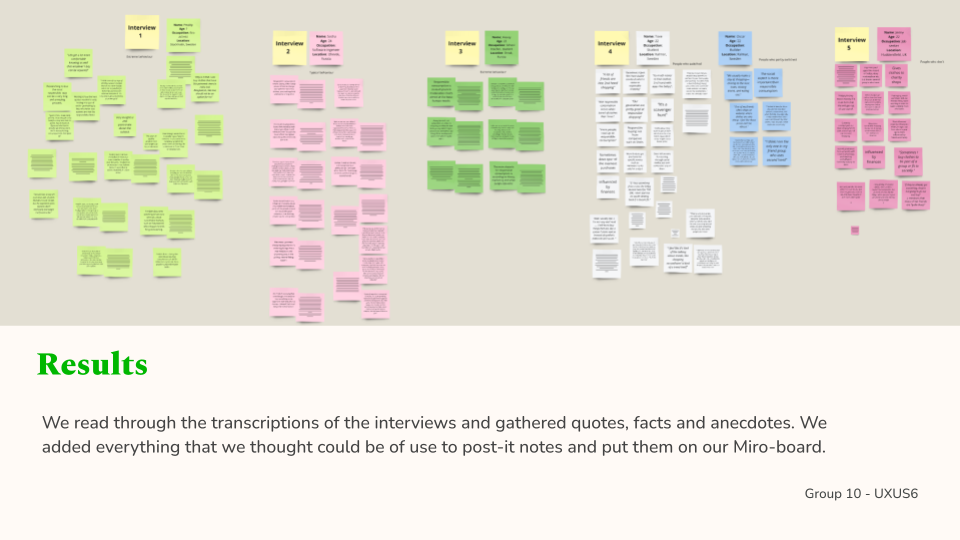
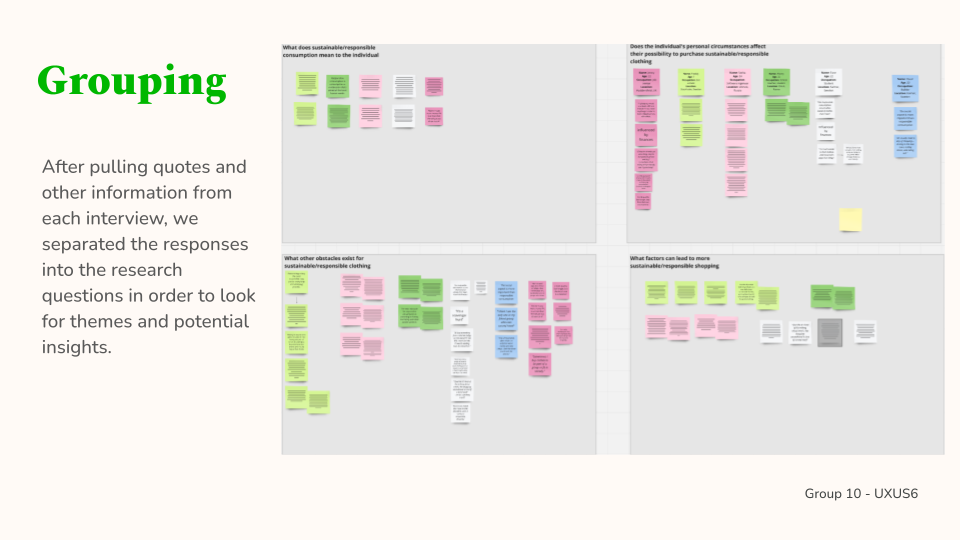
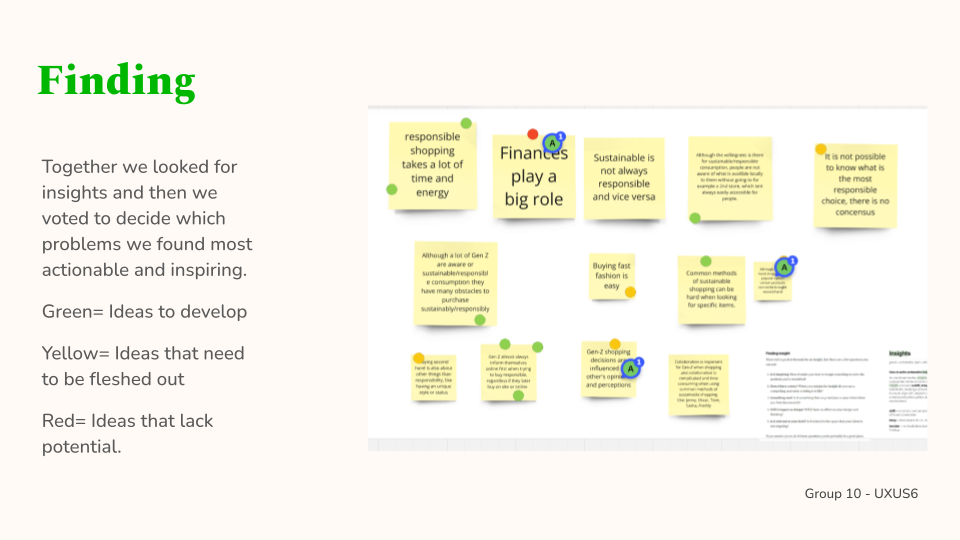
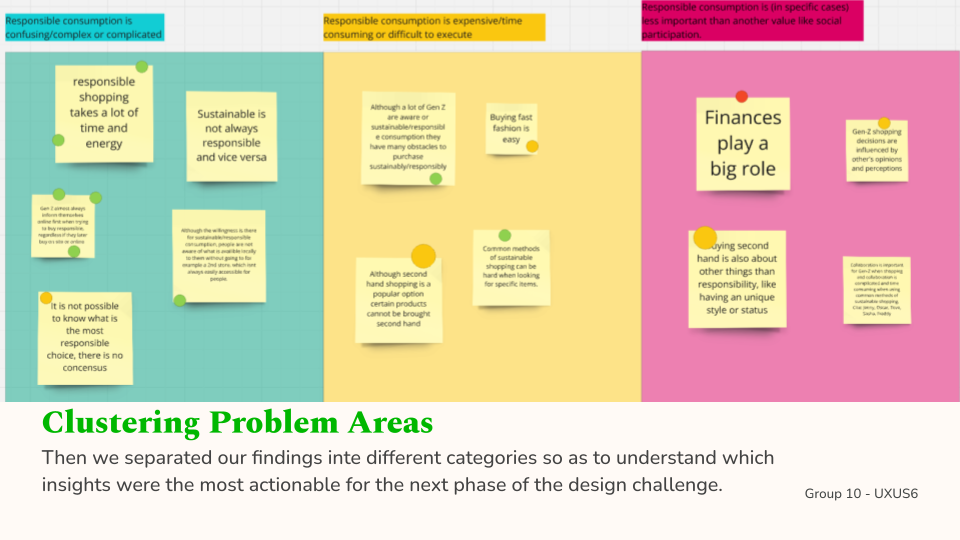
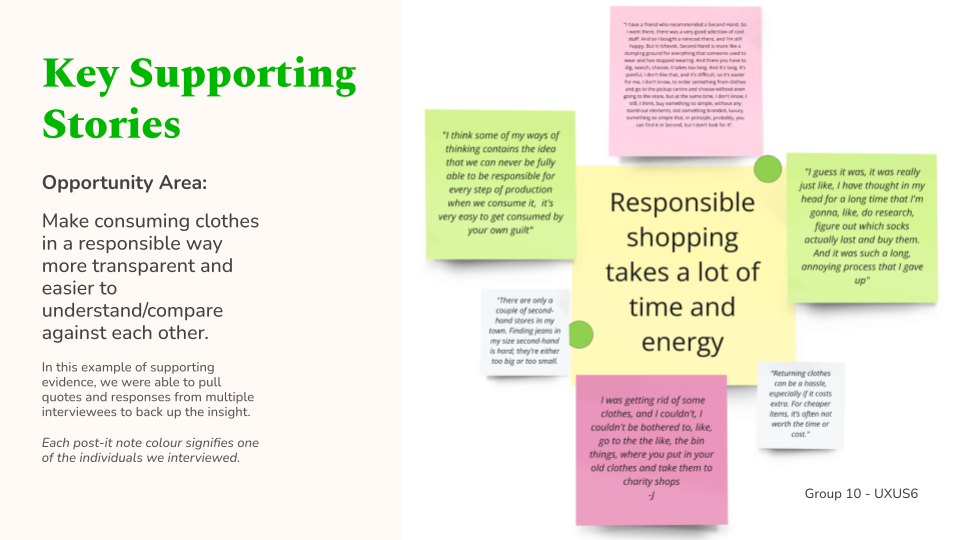
Design Challenge (Individual)
What is the biggest need to solve for?
Based on our interviews, Gen-Z desires to consume responsibly, but the process of doing so is often too complex and impractical, leading individuals to make hasty decisions when the sustainable alternatives didn’t work out.
Where is the biggest impact to be made?
If the average Gen-Z consumer can be offered a more sustainable choice, they will likely take it, but only if they can still get exactly what they are looking for.
How might we lower the threshold to responsible consumption for Gen-Z consumers by moulding the process of shopping sustainably around Gen-Z consumers actual habits and needs.
Reflections (Individual)
Synthesising User Research was more difficult than I anticipated.
I still feel like there is a dimension that I don’t yet fully understand and I am hoping that the next section will provide some clarity.
After interviewing our users, I felt it was very obvious that there is a gap in how we shop second-hand. While the “scavenger-hunt” aspect is fun, it is not practical when looking for specific items.
Unfortunately, one of the best ways to limit consumption is to only consume what you actually need. Meaning that these two main elements of responsible consumption can end up in direct opposition to each other. I think that there is a lot of room to explore in this area.
